VERY RARE! 1965 Apollo Program John F. Kennedy Space Center “MASTER PLAN - LAUCNH COMPLEX 39 AERA - HEATING PLAN” NASA Launch Control Center Blueprint*
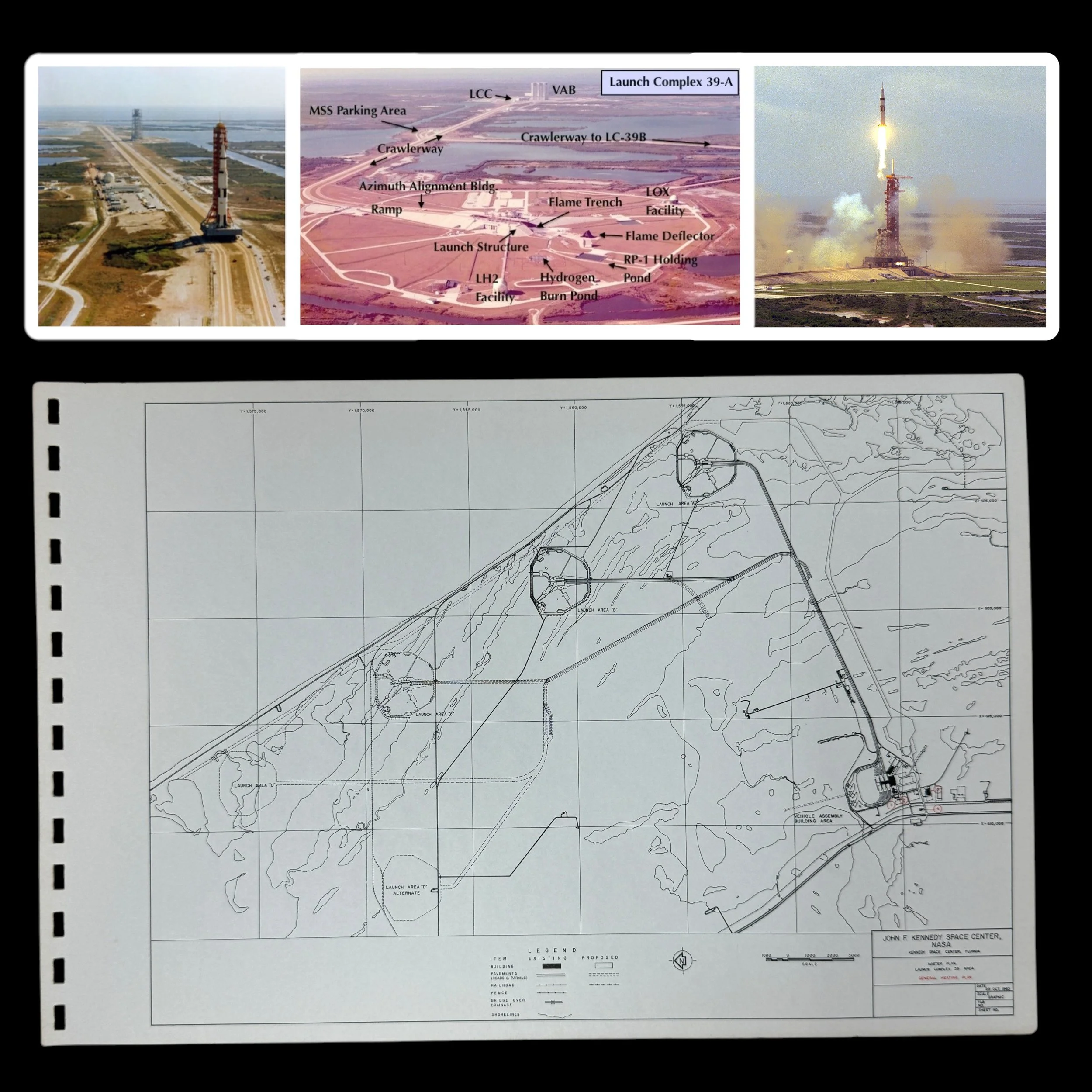
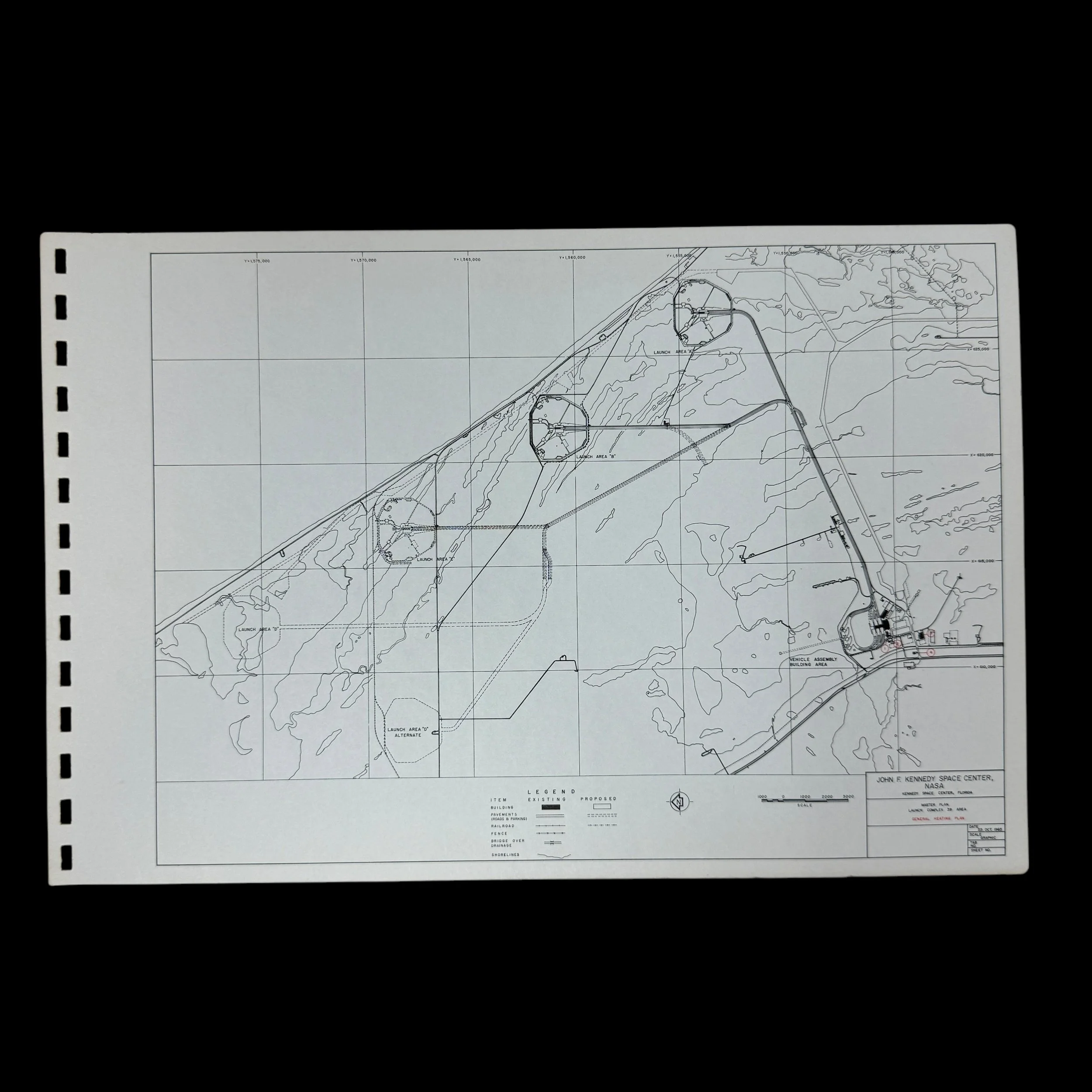
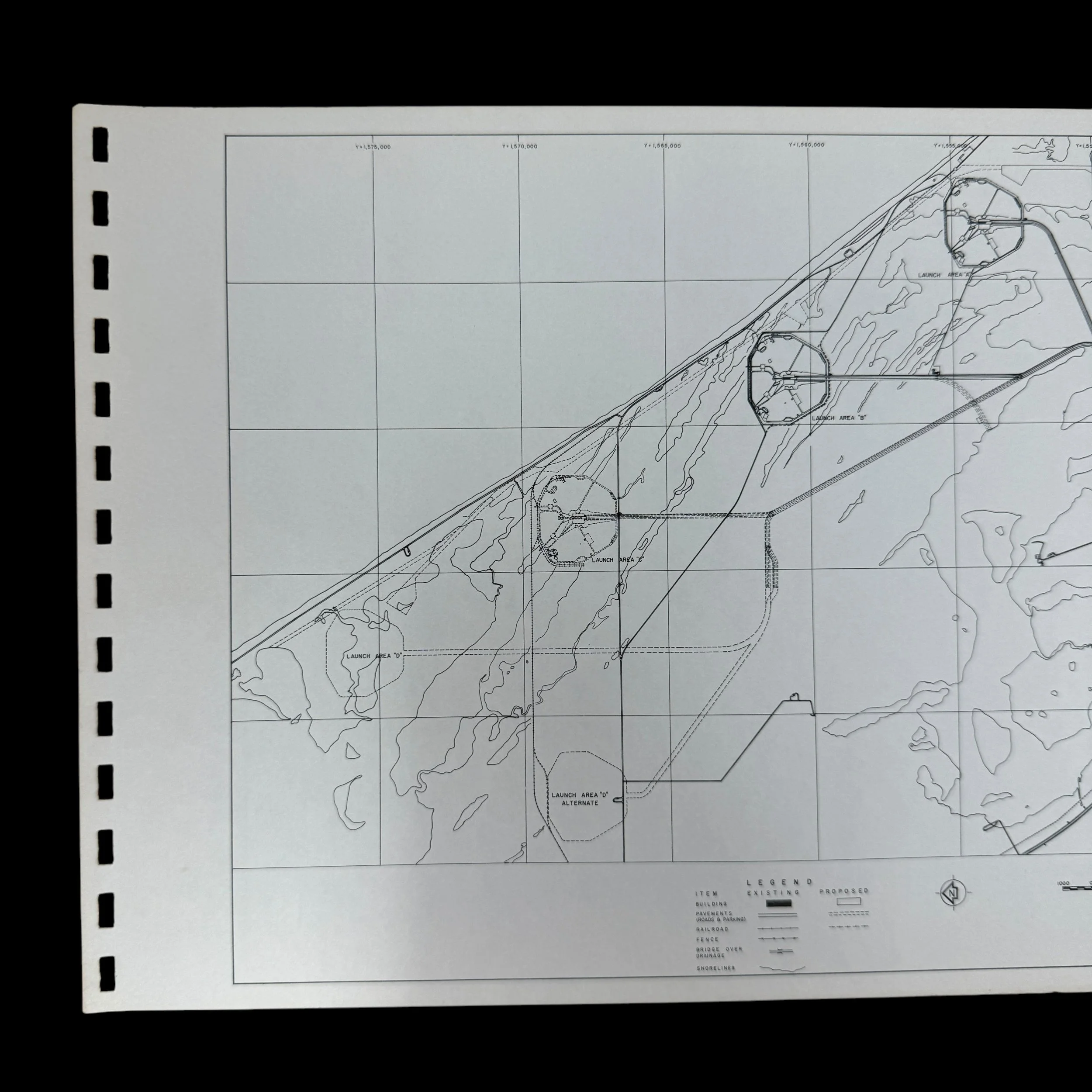

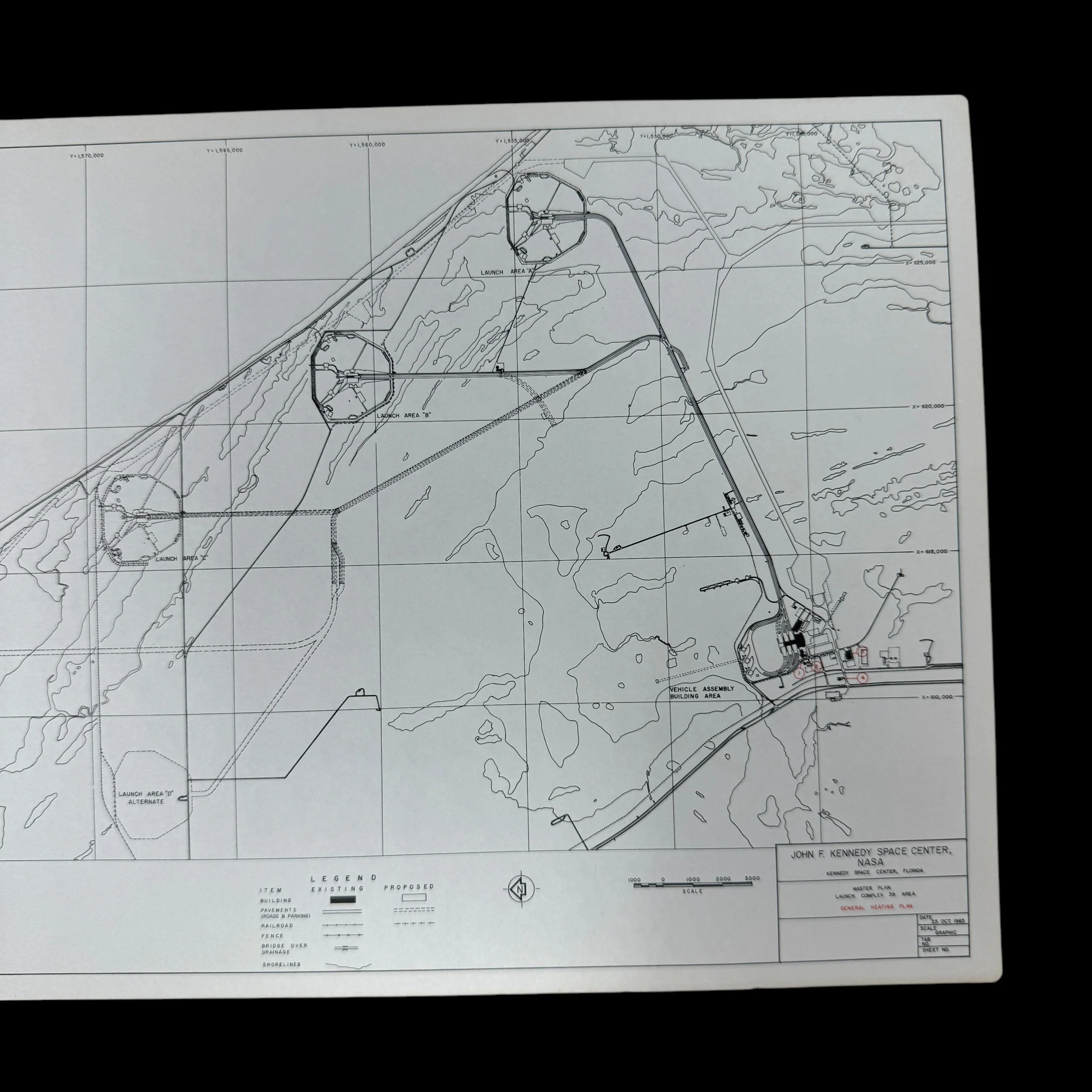



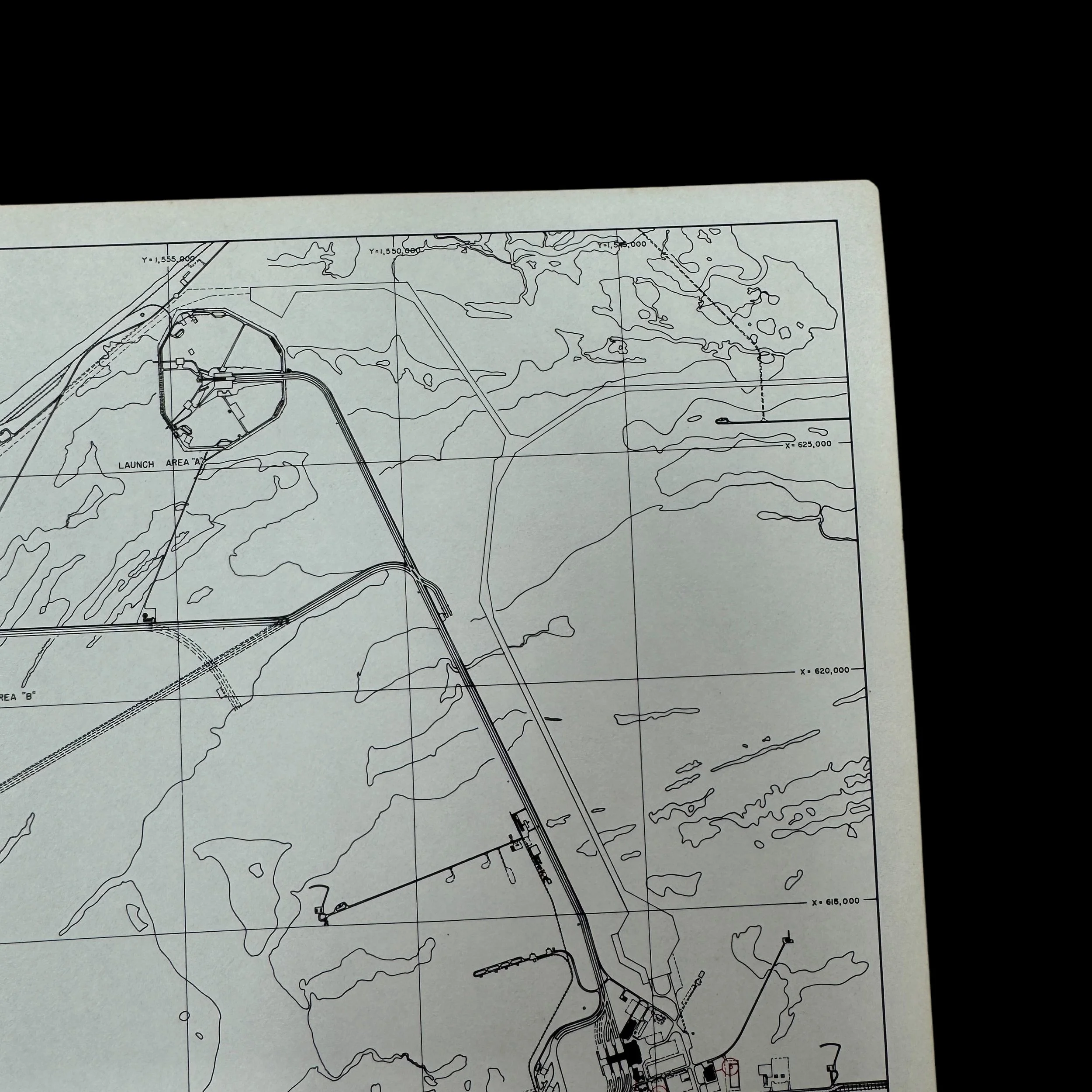
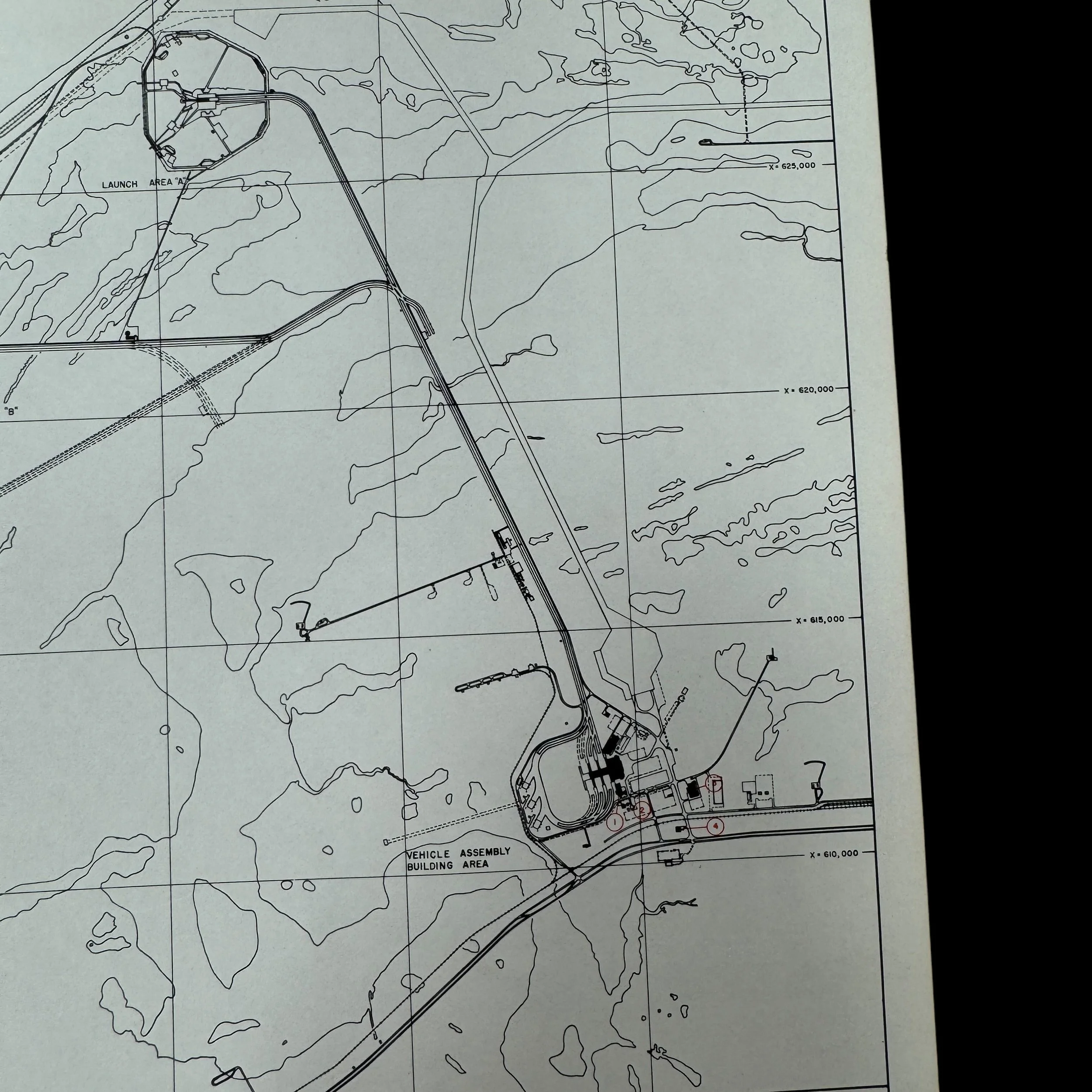
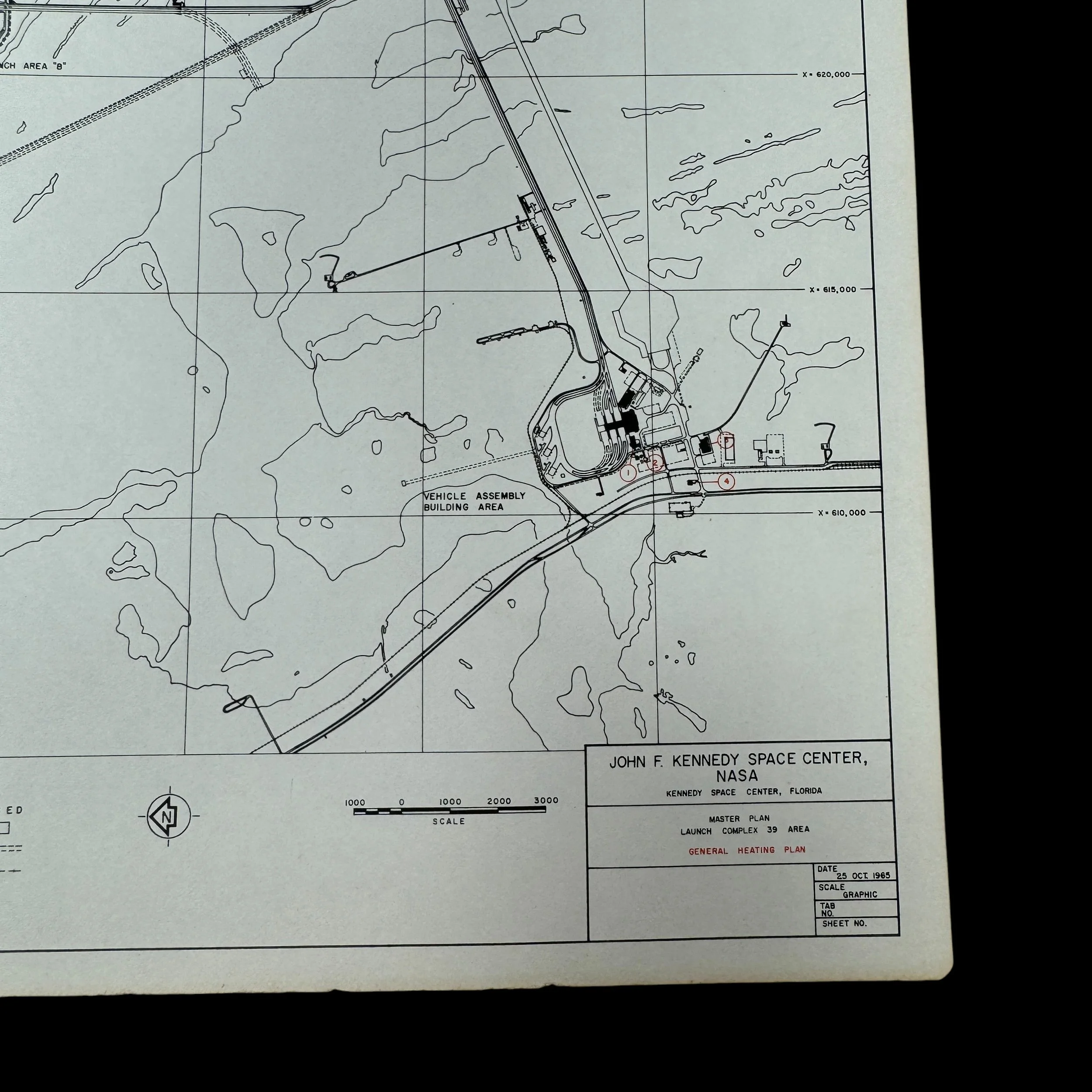
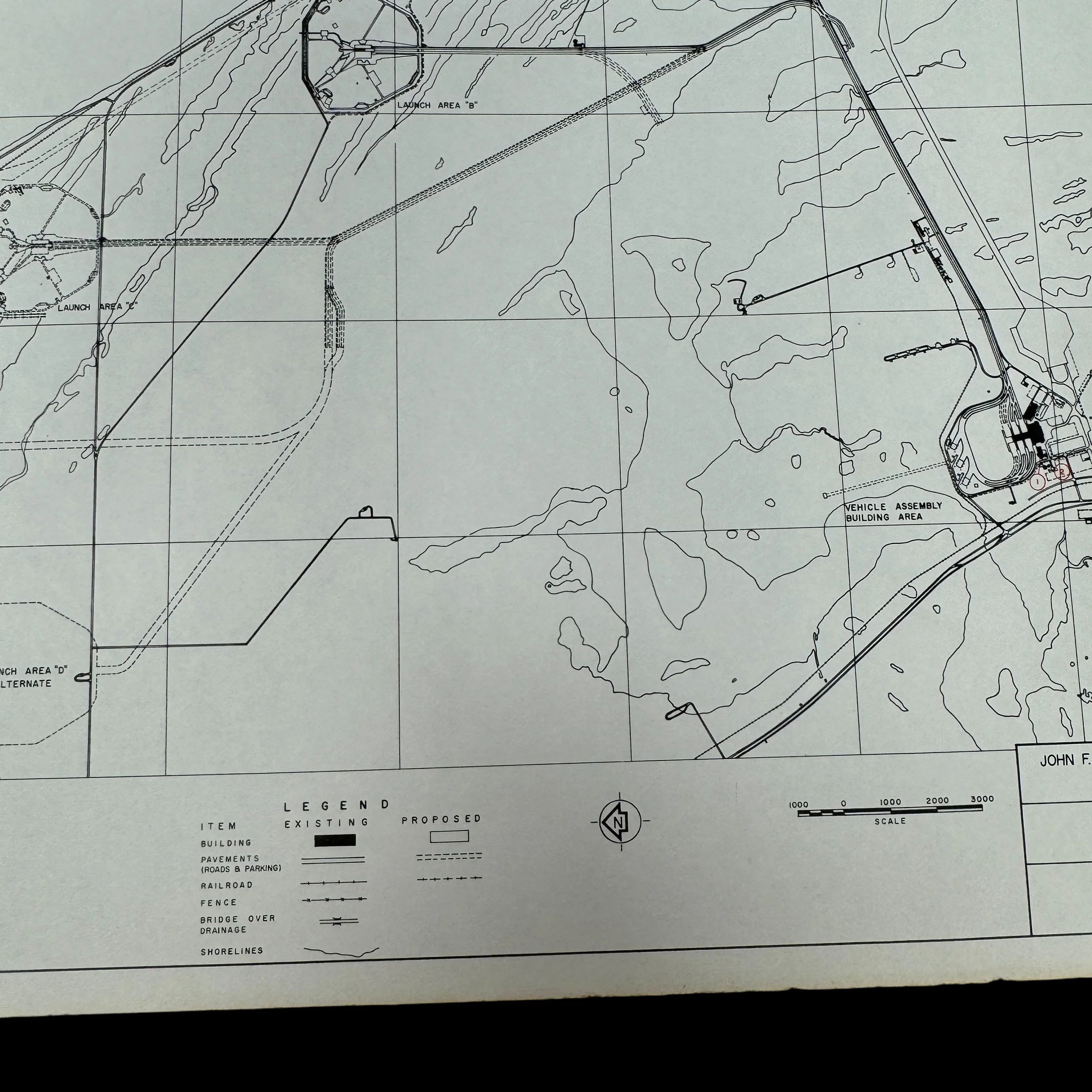
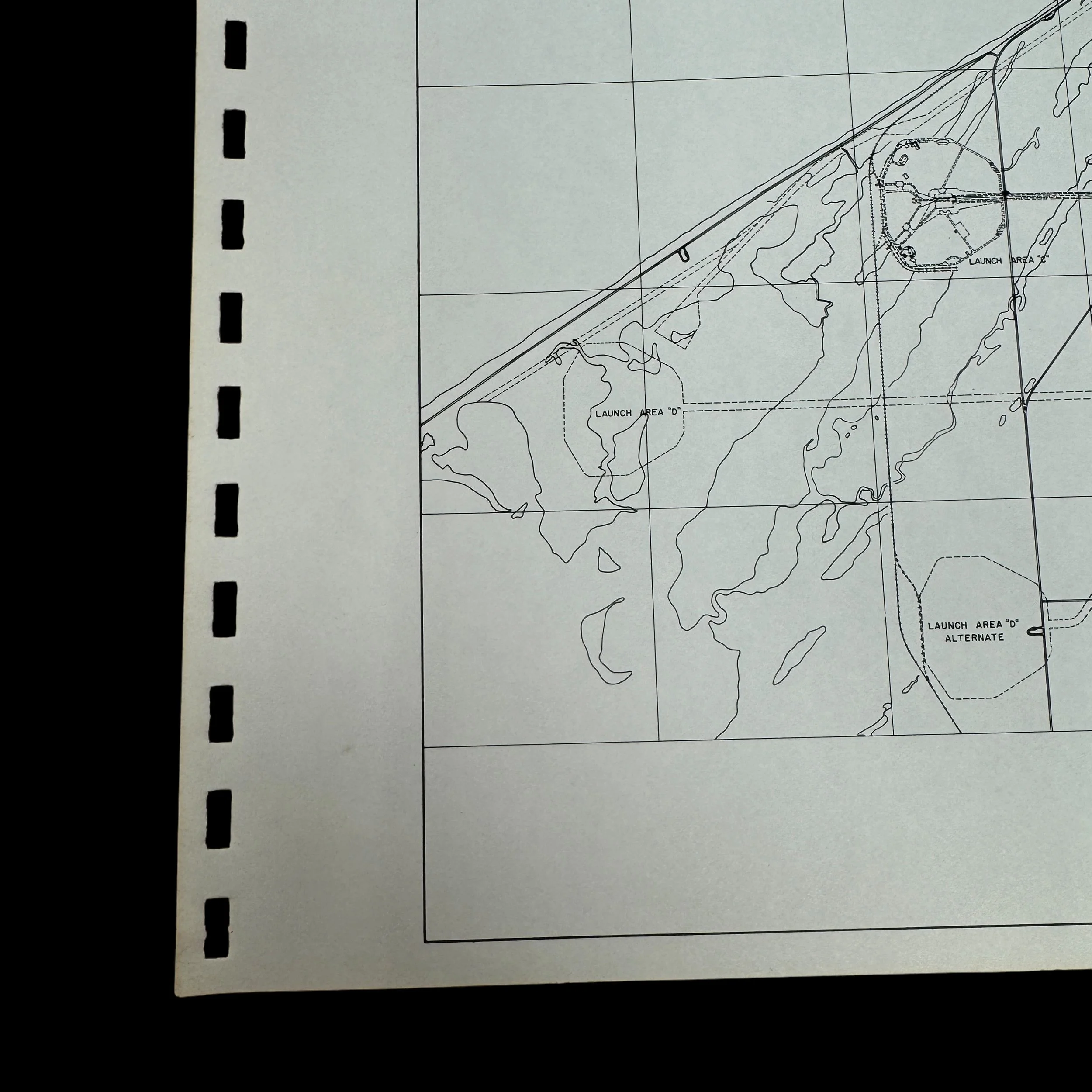
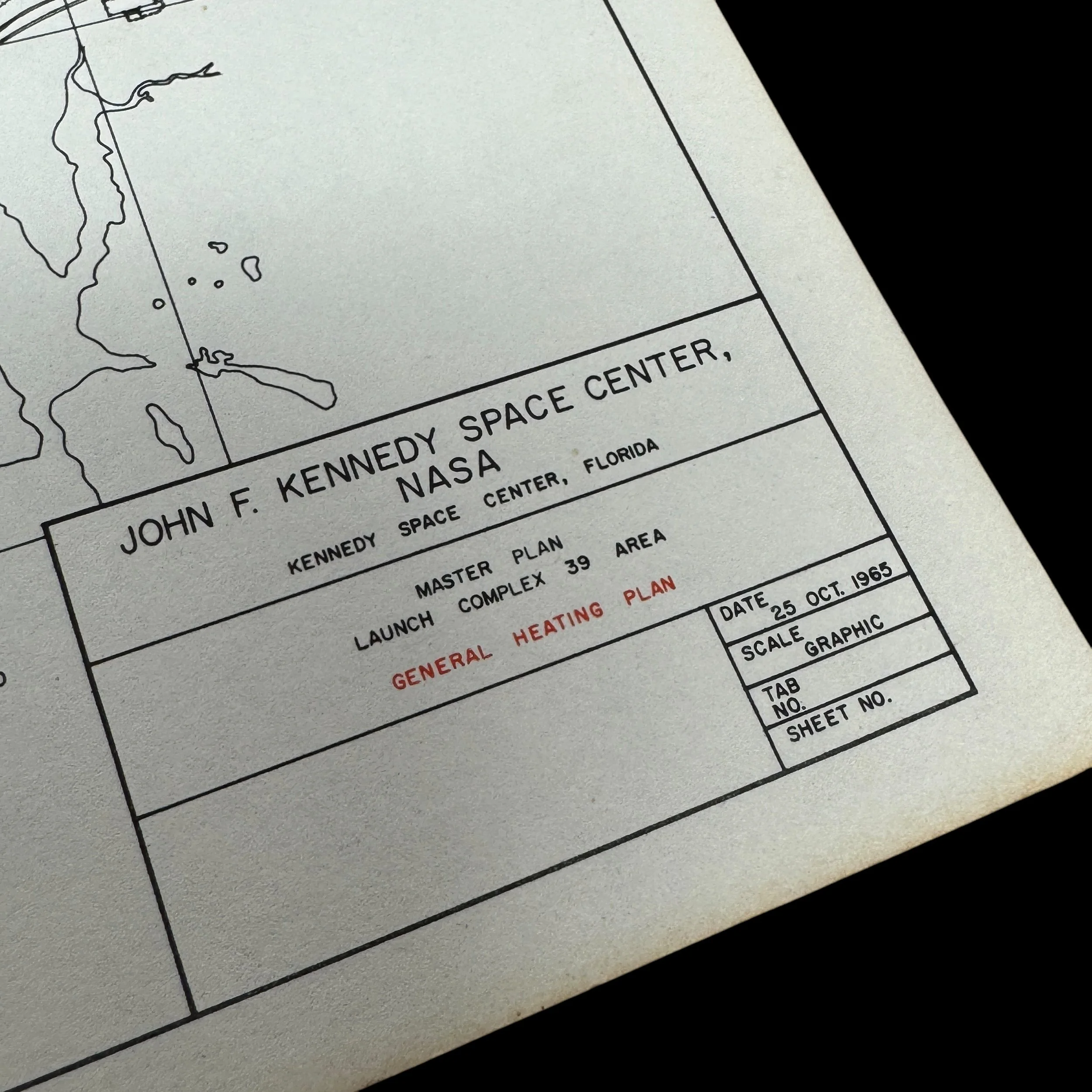

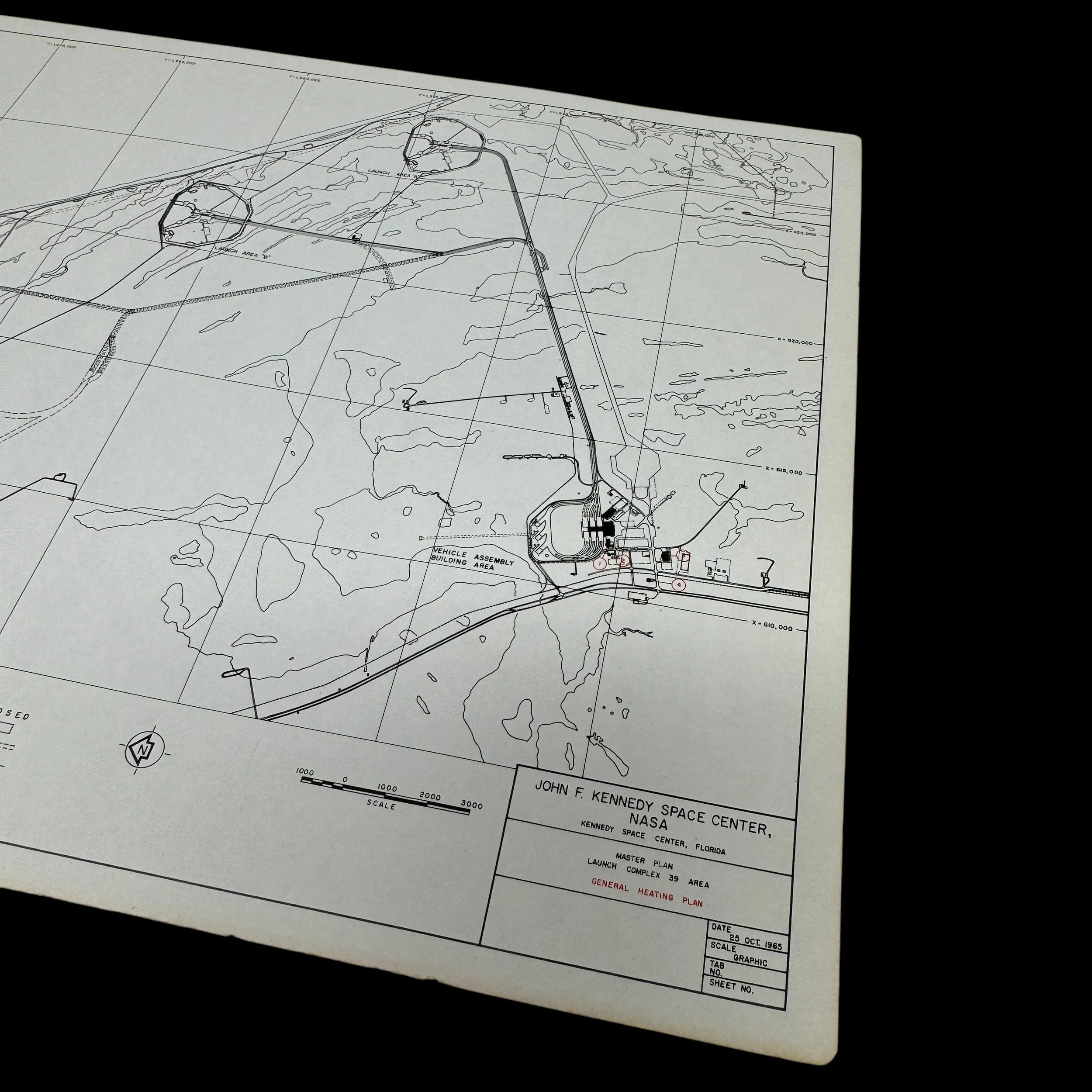


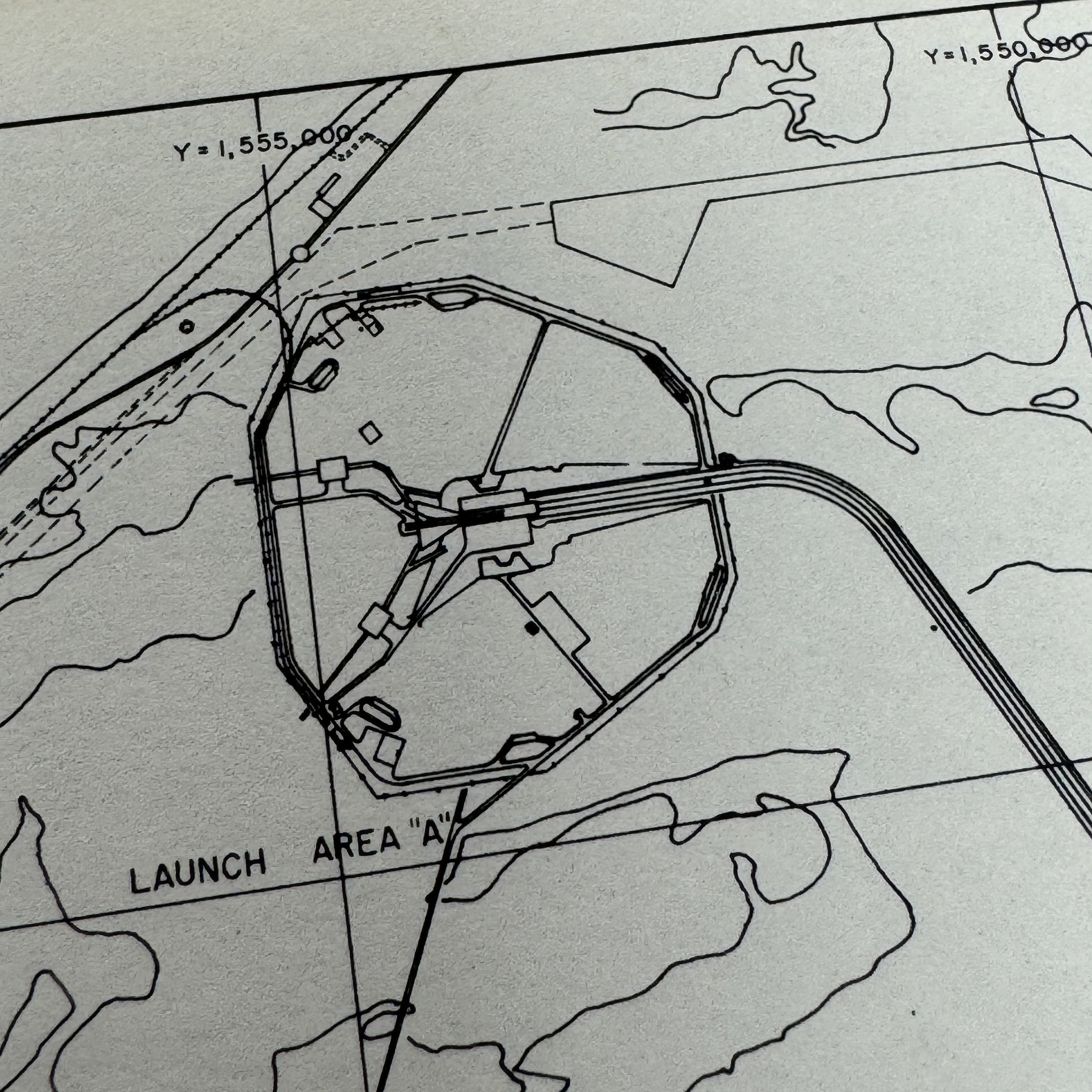











VERY RARE! 1965 Apollo Program John F. Kennedy Space Center “MASTER PLAN - LAUCNH COMPLEX 39 AERA - HEATING PLAN” NASA Launch Control Center Blueprint*
Comes with a hand-signed C.O.A.
*The Kennedy Space Center was integral to the Apollo program’s success. The first major test of the Saturn V rocket occurred at LC-39A in 1967 with Apollo 4, an uncrewed mission to test the rocket’s capabilities. Following successful tests, KSC launched the crewed Apollo 7 mission in 1968, which tested the spacecraft's systems in Earth orbit. KSC’s most historic moment came on July 16, 1969, when Apollo 11 launched from LC-39A. Millions watched as the Saturn V rocket lifted off, carrying the crew that would make humanity’s first lunar landing. The mission was a monumental success, and the center continued to support subsequent lunar missions, culminating in Apollo 17, the last crewed lunar mission, in 1972.
Size: 8 × 11.75 inches
Type: Original NASA Early Apollo Program John F. Kennedy Space Center master plan Launch Complex 39 blueprint for upcoming Apollo lunar missions.
Features: Launch Complex 39 Launch Area A, Launch Area B, Launch Area C, Launch Control Center (Mission Control), TV site, press site, Vehicle Assembly Building, Saturn Crawlerway, Camera Towers, etc.
Date: 1965
This incredibly rare and museum-grade National Aeronautics and Space Administration (NASA) artifact is an original 1965 dated early Apollo Program master plan blueprint of what is considered as one of the most famous lauch complexes in the world LAUNCH COMPLEX 39 for the John F. Kennedy Space Center. Titled “MASTER PLAN - LAUCNH COMPLEX 39 AERA - HEATING PLAN” this master blueprint details the 1965 expansion of the originally named Launch Operations Center (LOC) from its beginning construction in 1962 to the infrastructure needed for launching the Apollo Program Saturn V rocket, the powerful vehicle designed to carry astronauts to the Moon. The site covered approximately 144,000 acres, encompassing launch pads, a massive Vehicle Assembly Building (VAB), and a network of transportation and support facilities.
1965 was a critical year for the Kennedy Space Center as NASA accelerated its preparations for the Apollo program. At this point, the space center was still under construction, and NASA was working against the clock to complete the facility's major components such as the Vehicle Assembly Building (VAB), The Launch Pads Complex 39A and 39B, Crawler-Transporter, and Infrastructure Development. The developments and activities that took place in 1965 laid the foundation for the successful Apollo missions that would follow later in the decade.
As 1965 drew to a close, the Kennedy Space Center was well on its way to becoming the world’s premier launch facility. The efforts made in this year, including the near-completion of the VAB and the development of the launch complexes, ensured that NASA was on track to meet President Kennedy’s goal of landing on the Moon by the end of the decade. In subsequent years, the Kennedy Space Center would continue to evolve and expand, playing a vital role in the Gemini missions, the Apollo program, and later, the Space Shuttle program.
The Kennedy Space Center’s legacy extends beyond its infrastructure; it embodies the spirit of innovation, exploration, and perseverance that characterized the early days of NASA. The work done in 1965, in particular, demonstrated the nation’s commitment to achieving ambitious goals through collaboration, technological advancement, and sheer determination. This year stands as a testament to the foundational efforts that made it possible for humans to set foot on the Moon and for the United States to establish its leadership in space exploration.
This original 1965 Apollo era blueprint comes from the collection of NASA employee who was a part of the John F. Kennedy Space Center expansion to support the future Apollo lunar missions.
Launch Pad 39A
Launch Pad 39A is historically significant and has launched the following notable missions:
Apollo Program (1967–1973)
Apollo 4– November 9, 1967: First uncrewed test of the Saturn V rocket.
Apollo 6– April 4, 1968: Uncrewed test flight for Saturn V.
Apollo 8– December 21, 1968: First crewed mission to orbit the Moon.
Apollo 9– March 3, 1969: First crewed test of the Lunar Module in Earth orbit.
Apollo 10– May 18, 1969: Crewed test of Lunar Module in lunar orbit.
Apollo 11– July 16, 1969: First crewed Moon landing mission.
Apollo 12– November 14, 1969: Second crewed Moon landing mission.
Apollo 13– April 11, 1970: Known for its critical in-flight emergency; "successful failure."
Apollo 14– January 31, 1971: Third crewed Moon landing mission.
Apollo 15– July 26, 1971: Fourth crewed Moon landing, first use of the Lunar Rover.
Apollo 16– April 16, 1972: Fifth Moon landing.
Apollo 17– December 7, 1972: Sixth and final Apollo Moon landing.
Skylab Program (1973)
Skylab 1– May 14, 1973: Launch of the Skylab space station (uncrewed).
Skylab 2– May 25, 1973: First crewed mission to Skylab.
Skylab 3– July 28, 1973: Second crewed mission to Skylab.
Skylab 4– November 16, 1973: Third and final crewed Skylab mission.
Apollo-Soyuz Test Project (1975)
Apollo-Soyuz– July 15, 1975: The first international human spaceflight mission, conducted jointly with the Soviet Union.
Space Shuttle Program (1981–2011)
All initial shuttle launches were from Pad 39A, including:
STS-1– April 12, 1981: First Space Shuttle launch (Columbia).
STS-41D– August 30, 1984: Discovery’s first flight.
STS-31– April 24, 1990: Launch of the Hubble Space Telescope.
STS-135– July 8, 2011: Final Space Shuttle mission.
Commercial Crew and SpaceX Missions (2014–Present)
Since 2014, SpaceX has leased Pad 39A and launched various missions, including:
Falcon Heavy test flight– February 6, 2018.
Demo-2– May 30, 2020: First crewed mission launched from U.S. soil since Shuttle retirement.
Crew-1, Crew-2, Crew-3, Crew-4– Ongoing commercial crew missions to the ISS.
Launch Pad 39B
Launch Pad 39B supported both Apollo and Shuttle missions and has since been upgraded for future Artemis missions.
Apollo Program
Apollo 10– May 18, 1969 (back-up site, not launched here).
Apollo 12– November 14, 1969 (used for Apollo 13’s contingency site).
Skylab Program
Skylab missions were launched primarily from Pad 39A, but 39B served as a contingency and support site.
Space Shuttle Program
STS-9– November 28, 1983: First shuttle mission from Pad 39B.
STS-51L– January 28, 1986: Challenger disaster occurred shortly after launch.
STS-116, STS-117, STS-118, STS-119– 2006–2009: Several shuttle missions to the ISS were launched from 39B during Shuttle and pad configurations.
Artemis Program and SLS
Artemis I– 2022: Uncrewed mission around the Moon.
Future Artemis missionsare planned for Pad 39B, including crewed lunar missions with the Space Launch System.
Launch Pad 39C
Launch Pad 39C, a smaller pad constructed in 2015, supports small launch vehicles and CubeSats but has yet to host any major NASA missions. It is intended for commercial use and remains available as a flexible launch pad for smaller, experimental rockets.
FULL HISTORY: Launch Complex 39
Launch Complex 39 at the John F. Kennedy Space Center is one of NASA’s most iconic and historic launch sites. Built to support the ambitious Apollo program in the 1960s, this complex has witnessed some of humanity’s most significant achievements in space exploration. From sending the first humans to the Moon to supporting the Space Shuttle program and upcoming Artemis missions, Launch Complex 39 is more than just a launch site—it’s a monument to human innovation, resilience, and the spirit of exploration.
Construction and Initial Design
Launch Complex 39 was born from a bold vision. By the early 1960s, NASA recognized that existing facilities were inadequate for launching the massive Saturn V rockets required to support President John F. Kennedy’s ambitious goal of landing a man on the Moon before the end of the decade. The result was Launch Complex 39, a massive project undertaken on Merritt Island, Florida, adjacent to Cape Canaveral.
The site itself was originally designed with three launch pads, designated Pads 39A, 39B, and 39C, but only Pads A and B were ultimately constructed. The construction of Pad 39A began in 1964 and involved an impressive array of engineering feats. Engineers built the pad atop a foundation that could withstand the intense vibration and heat from the Saturn V's engines, laying a reinforced concrete pad over several feet of compacted soil. The complex also included a 525-foot-tall mobile service structure (MSS) and a mobile launcher platform (MLP), allowing the Saturn V rocket to be assembled in the Vehicle Assembly Building (VAB) and then transported on massive crawler-transporters to the launch pad.
One of the most iconic aspects of Launch Complex 39 is the Vehicle Assembly Building, constructed between 1963 and 1965. The VAB was then the largest building by volume in the world and remains one of the tallest buildings in the United States outside of an urban center. Standing at 525 feet, it served as a towering space for the assembly of Saturn V rockets. The VAB, along with the crawler-transporters, revolutionized launch pad logistics, enabling rockets to be assembled in a controlled environment and then moved to the launch pad.
Launch Complex 39 and the Apollo Program
The first launch from Pad 39A was Apollo 4 in November 1967, an uncrewed test flight of the Saturn V. The test was a critical milestone, demonstrating that the massive rocket could perform its duties. This launch set the stage for future missions, culminating in the historic Apollo 11 mission in July 1969, which saw Neil Armstrong and Buzz Aldrin land on the Moon.
Apollo missions continued to launch from Pads 39A and 39B throughout the 1960s and early 1970s. Complex 39 served as the gateway to space for each Apollo crewed mission, including Apollo 13, where quick action by mission control and the crew averted disaster after an onboard explosion. The final Apollo mission to use Launch Complex 39 was Apollo 17 in 1972, marking the end of an era of lunar exploration.
Beyond the lunar missions, Complex 39 was used for Skylab launches as well. Skylab, the first American space station, was launched from Pad 39A in 1973, with subsequent crewed missions launched from Pad 39B. Complex 39 thus supported the development of long-term space habitation and laid the foundation for future orbital laboratories like the International Space Station.
Transition to the Space Shuttle Era
Following the end of the Apollo program, NASA repurposed Launch Complex 39 for the Space Shuttle program. The complex underwent significant modifications to accommodate the unique requirements of the Space Shuttle, which featured a reusable orbiter, solid rocket boosters, and an external fuel tank. The construction efforts included adjustments to the launch pads, such as installing new service towers and flame deflectors that could handle the Shuttle’s different launch profile and thrust pattern.
One of the most notable additions was the Shuttle’s rotating service structure, which enabled crews to safely access and service the orbiter while it was on the launch pad. The complex was further equipped with a sound suppression system to protect the Shuttle from the intense acoustic energy generated during launch. Launch Complex 39 became home to all Space Shuttle missions, including notable launches like STS-1, the first Shuttle launch in 1981, and STS-135, the final Shuttle mission in 2011.
This era of Launch Complex 39 saw numerous historic moments, from the deployment of the Hubble Space Telescope to the construction of the International Space Station. However, it was also marred by tragedy, as the Challenger disaster of 1986 occurred shortly after launch from Pad 39B. NASA made significant safety modifications following this disaster, and the Shuttle program continued for another 25 years, completing 135 missions before concluding in 2011.
Expansion and Adaptation for the Future
With the retirement of the Space Shuttle, Launch Complex 39 entered a new phase of transformation. NASA began reconfiguring the complex to support the next generation of space missions, including the Artemis program, which aims to return humans to the Moon and eventually to Mars. In 2011, Pad 39A was leased to SpaceX, while NASA retained Pad 39B for its own launches.
SpaceX made significant modifications to Pad 39A to support its Falcon 9 and Falcon Heavy rockets. The company constructed new service structures and repurposed existing infrastructure to facilitate launches of crewed and cargo missions to the ISS, as well as commercial satellite launches. Notably, Pad 39A was the launch site for Crew Dragon’s first crewed mission, marking the return of human spaceflight capabilities to the United States in 2020.
Pad 39B, meanwhile, was refurbished to serve NASA’s Space Launch System (SLS) rocket, which is central to the Artemis program. Pad 39B was stripped of the Shuttle-era rotating service structure and refitted with new support structures designed to be flexible enough to accommodate different types of launch vehicles. The SLS rocket will carry the Orion spacecraft on missions to the Moon, beginning with Artemis I, an uncrewed test flight, and later Artemis II, which will carry astronauts around the Moon. The Artemis program aims to establish a sustainable human presence on the Moon, paving the way for future Mars missions and further exploration of the solar system.
Future Missions and Beyond
Launch Complex 39 is expected to remain at the heart of NASA’s space exploration efforts well into the future. In addition to supporting the Artemis program, the complex will likely play a role in future Mars exploration missions. Moreover, its continued collaboration with private spaceflight companies, including SpaceX and Blue Origin, signals a new era of innovation and partnership.
SpaceX, with its reusable rocket technology, has transformed the economics of spaceflight, launching from Pad 39A not only crewed missions to the ISS but also heavy payloads into geostationary orbit and beyond. Blue Origin, which has leased nearby facilities, plans to conduct its own orbital launches, potentially using Complex 39 infrastructure as part of a burgeoning ecosystem of private spaceflight activity on the Space Coast.
Legacy of Launch Complex 39
Launch Complex 39 stands as a testament to the ingenuity, adaptability, and vision of the U.S. space program. From the Apollo and Skylab missions to the Space Shuttle and Artemis programs, it has evolved alongside the needs of American space exploration. The complex has seen humankind’s first steps on the Moon, the assembly of the International Space Station, and the advent of commercial human spaceflight.
As Launch Complex 39 continues to evolve, it serves as a reminder of the achievements of the past and a beacon of future possibilities. With new missions on the horizon and a shared commitment between NASA and private industry, Launch Complex 39 will continue to be a crucial gateway to space, symbolizing humanity's ongoing quest to reach beyond the stars.
FULL HISTORY: John F. Kennedy Space Center (KSC)
The John F. Kennedy Space Center (KSC), one of the most iconic launch sites in the world, has been at the forefront of space exploration for over six decades. Located on Merritt Island, Florida, KSC is NASA's primary launch center for human spaceflight and has played a critical role in every major U.S. space program, including the Apollo missions, Space Shuttle program, and most recently, Artemis missions aimed at returning humans to the Moon. This detailed history traces the center's conception, construction, facilities, launch complexes, and its monumental contributions to space exploration.
Conception and Early Development (1950s - 1960s)
The origins of the Kennedy Space Center trace back to the early days of the U.S. space program. In the 1950s, the U.S. government, eager to compete with the Soviet Union during the Cold War's space race, established a facility on Cape Canaveral for missile testing and satellite launches. The site's proximity to the equator allowed rockets to take advantage of the Earth's rotation, making it an ideal location.
With President John F. Kennedy’s 1961 commitment to land an American astronaut on the Moon before the end of the decade, it became evident that the existing facilities at Cape Canaveral were insufficient to support the massive rockets needed for the Apollo program. In 1962, NASA acquired more than 140,000 acres on Merritt Island north of Cape Canaveral to create a new, expansive launch facility. The new center, initially named the Launch Operations Center, was designed to support the Saturn V rockets and the Apollo program.
Construction on the site began in earnest in 1962, and the new complex was officially renamed the John F. Kennedy Space Center on November 29, 1963, just days after Kennedy’s assassination, as a tribute to the president’s vision of lunar exploration.
Construction and Facilities
The construction of Kennedy Space Center required the development of numerous facilities to support the assembly, testing, and launching of the Saturn V rockets and other spacecraft. The most significant facilities include:
1. Vehicle Assembly Building (VAB)
One of the most iconic structures at KSC, the Vehicle Assembly Building (VAB), was completed in 1966. Standing at 525 feet tall, the VAB is one of the largest buildings in the world by volume. It was originally designed to stack the stages of the Saturn V rocket vertically, preparing them for launch. The VAB is equipped with massive cranes to hoist the rocket sections and was later modified to support the assembly of the Space Shuttle and, more recently, the Space Launch System (SLS) rocket for the Artemis program.
2. Launch Complex 39 (LC-39)
To accommodate the Apollo missions, two major launch pads were constructed at KSC:
Launch Complex 39A: The first of the two pads, LC-39A, became operational in 1967. It was specifically designed for the Saturn V and was used for the majority of Apollo missions, including the historic Apollo 11mission that carried astronauts Neil Armstrong, Buzz Aldrin, and Michael Collins to the Moon in 1969.
Launch Complex 39B: This pad was completed shortly after LC-39A and served as a backup. LC-39B was used for Apollo missions and later modified to support the Space Shuttle and, eventually, the Artemis lunar missions.
These launch pads, equipped with mobile service towers and flame trenches, were essential for accommodating the massive exhaust forces and extreme temperatures generated by the rockets.
3. Crawler-Transporters
To move the Saturn V rockets from the VAB to the launch pads, NASA built two crawler-transporters, each weighing about 6 million pounds. These colossal vehicles were designed to transport the rockets along a specially designed crawlerway to ensure that the massive loads were supported. The crawler-transporters remain in use today, having been upgraded to carry the SLS rockets for the Artemis program.
4. Operations and Checkout (O&C) Building
The O&C Building is where NASA prepared astronauts for missions and tested spacecraft systems. Built in the 1960s, it remains a crucial facility for astronaut training, spacecraft assembly, and testing.
5. Launch Control Center (LCC)
The Launch Control Center, located adjacent to the VAB, serves as the nerve center for launch operations. The LCC was initially designed for the Apollo program and was later adapted for Space Shuttle launches. The control rooms within the LCC are where engineers and mission managers monitor and execute the countdown procedures.
Apollo Program and Historic Missions (1960s - 1970s)
The Kennedy Space Center was integral to the Apollo program’s success. The first major test of the Saturn V rocket occurred at LC-39A in 1967 with Apollo 4, an uncrewed mission to test the rocket’s capabilities. Following successful tests, KSC launched the crewed Apollo 7 mission in 1968, which tested the spacecraft's systems in Earth orbit.
KSC’s most historic moment came on July 16, 1969, when Apollo 11 launched from LC-39A. Millions watched as the Saturn V rocket lifted off, carrying the crew that would make humanity’s first lunar landing. The mission was a monumental success, and the center continued to support subsequent lunar missions, culminating in Apollo 17, the last crewed lunar mission, in 1972.
Skylab and Apollo-Soyuz (1970s)
After the Apollo program, KSC supported the launch of Skylab, the United States' first space station. The station’s modules and crews were launched using Saturn rockets from LC-39. The Apollo-Soyuz Test Project in 1975, a joint mission with the Soviet Union, marked the final flight of an Apollo spacecraft. It was launched from KSC and represented a symbolic end to the space race and the beginning of international cooperation in space.
Space Shuttle Era (1981 - 2011)
The introduction of the Space Shuttle program in the early 1980s transformed Kennedy Space Center into the heart of America’s human spaceflight operations. The shuttle’s reusability required significant modifications to existing facilities:
LC-39A and LC-39B were adapted to accommodate shuttle launches, including the construction of Fixed Service Structures and Rotating Service Structures that provided access to the shuttle and its payload.
The VAB was retrofitted to assemble the Shuttle's External Tank and Solid Rocket Boosters with the Orbiter.
The first shuttle, Columbia, launched from LC-39A on April 12, 1981. Over the next three decades, KSC hosted 135 shuttle launches, including historic missions like:
STS-6, the deployment of the first Tracking and Data Relay Satellite (TDRS).
STS-7, the first mission with a female astronaut, Sally Ride.
STS-31, which launched the Hubble Space Telescope.
STS-88, the first mission to assemble the International Space Station (ISS).
KSC also experienced the tragedies of Challenger (1986) and Columbia (2003), leading to significant safety overhauls and program reviews.
Post-Shuttle Era and Artemis Program (2011 - Present)
After the Space Shuttle program ended in 2011, Kennedy Space Center transitioned to support a new era of space exploration. The facilities at KSC were upgraded to accommodate NASA’s next-generation launch systems:
LC-39A was leased to SpaceX and modified for Falcon 9 and Falcon Heavy launches, making it a hub for commercial and crewed missions, including the Crew Dragon missions to the ISS.
LC-39B was refurbished for NASA’s Space Launch System (SLS), the most powerful rocket built since the Saturn V, aimed at carrying astronauts to the Moon under the Artemis program. Artemis I, an uncrewed test flight, launched in 2022 from LC-39B, marking a new era of lunar exploration.
Kennedy Space Center’s Continued Legacy
Today, KSC continues to evolve as a multi-user spaceport, supporting a range of commercial and government missions. With the Artemis program, KSC is again at the center of efforts to explore the Moon and beyond. The planned lunar landings, crewed missions to Mars, and commercial space operations underscore KSC’s role as a pivotal launch site in advancing human spaceflight.
Kennedy Space Center’s long history of innovation and achievement highlights its crucial role in making humanity’s space exploration dreams a reality. From launching Apollo astronauts to the Moon, deploying the ISS, to supporting the new Artemis missions, KSC remains a cornerstone of NASA’s efforts to explore the cosmos.